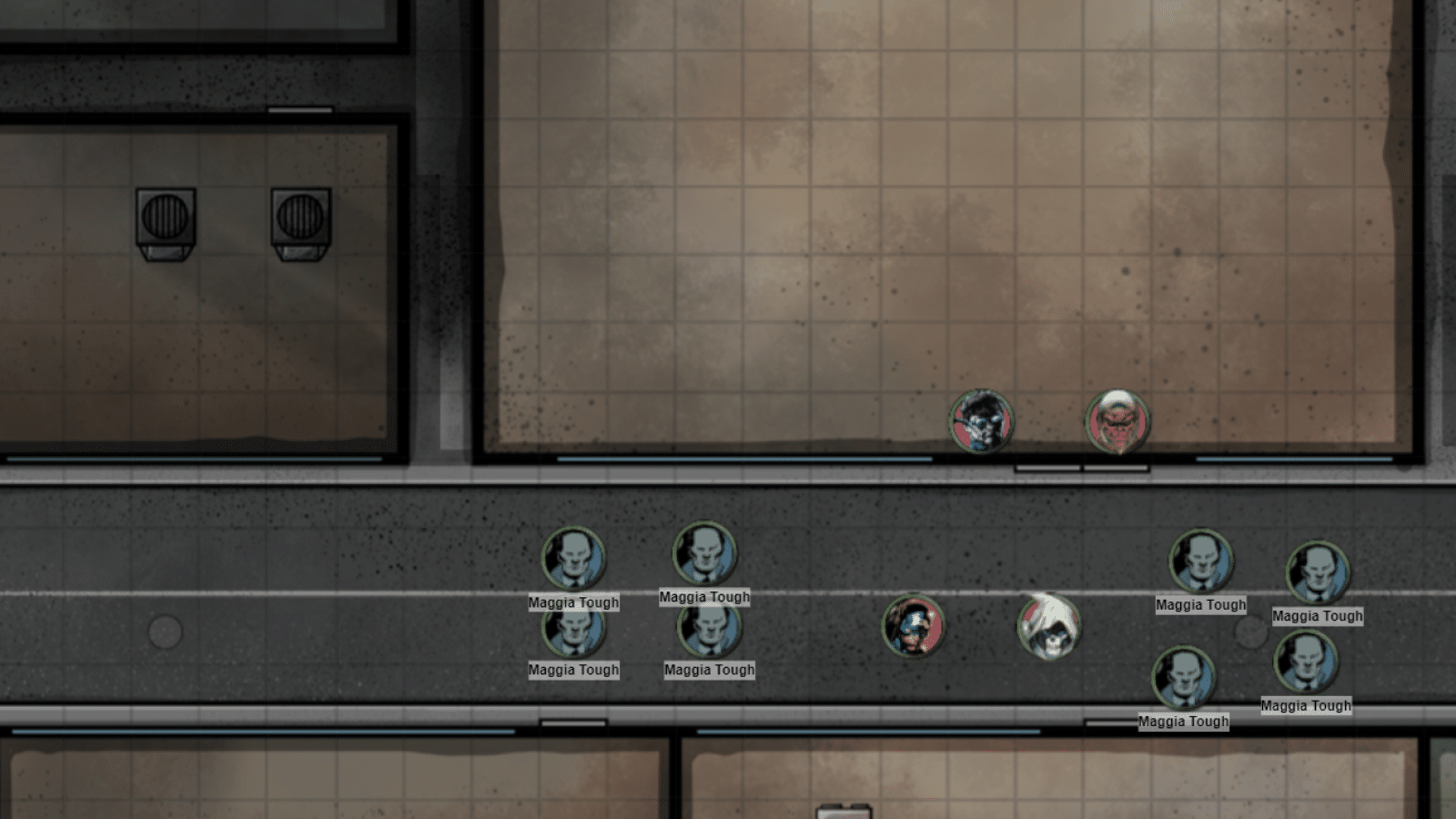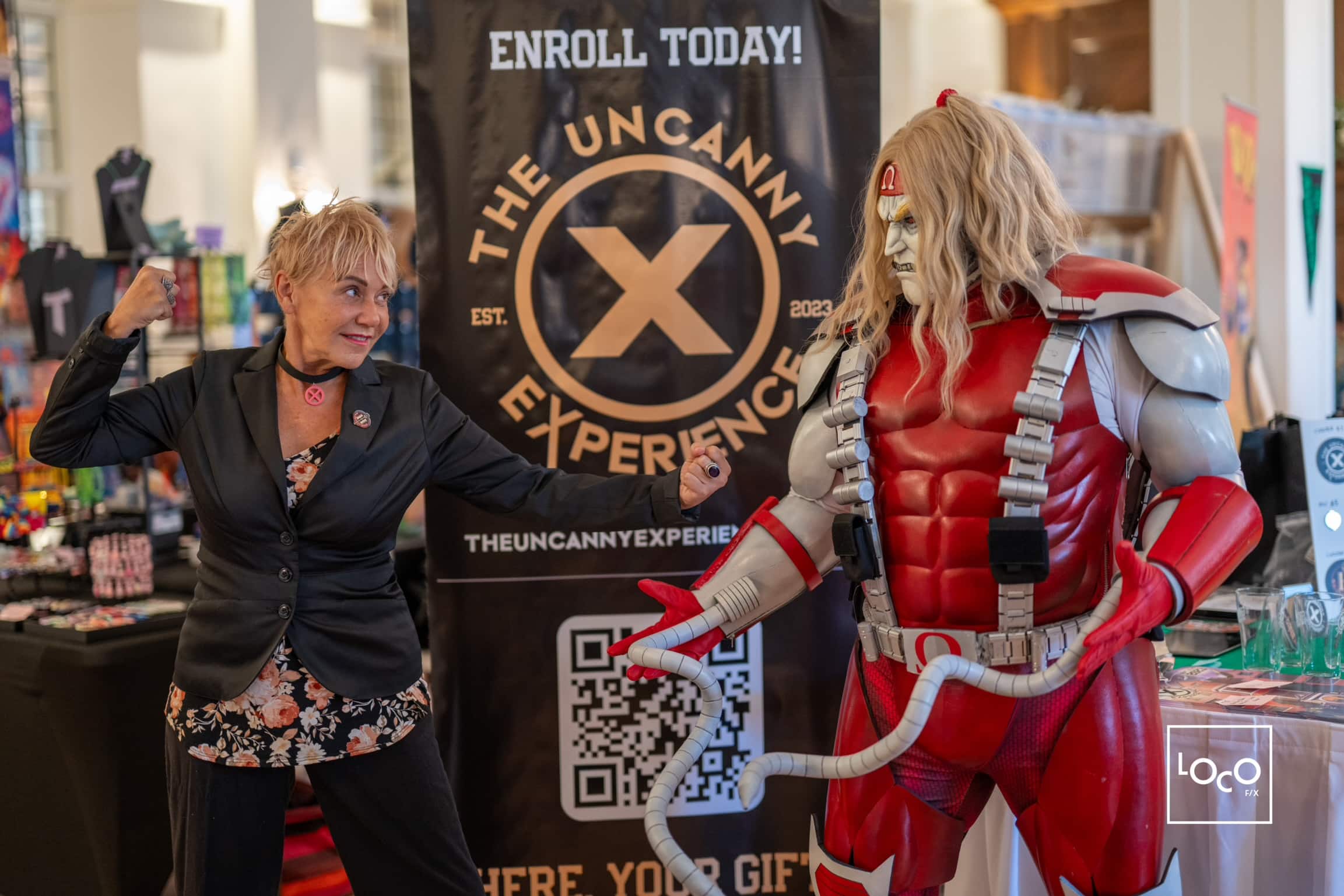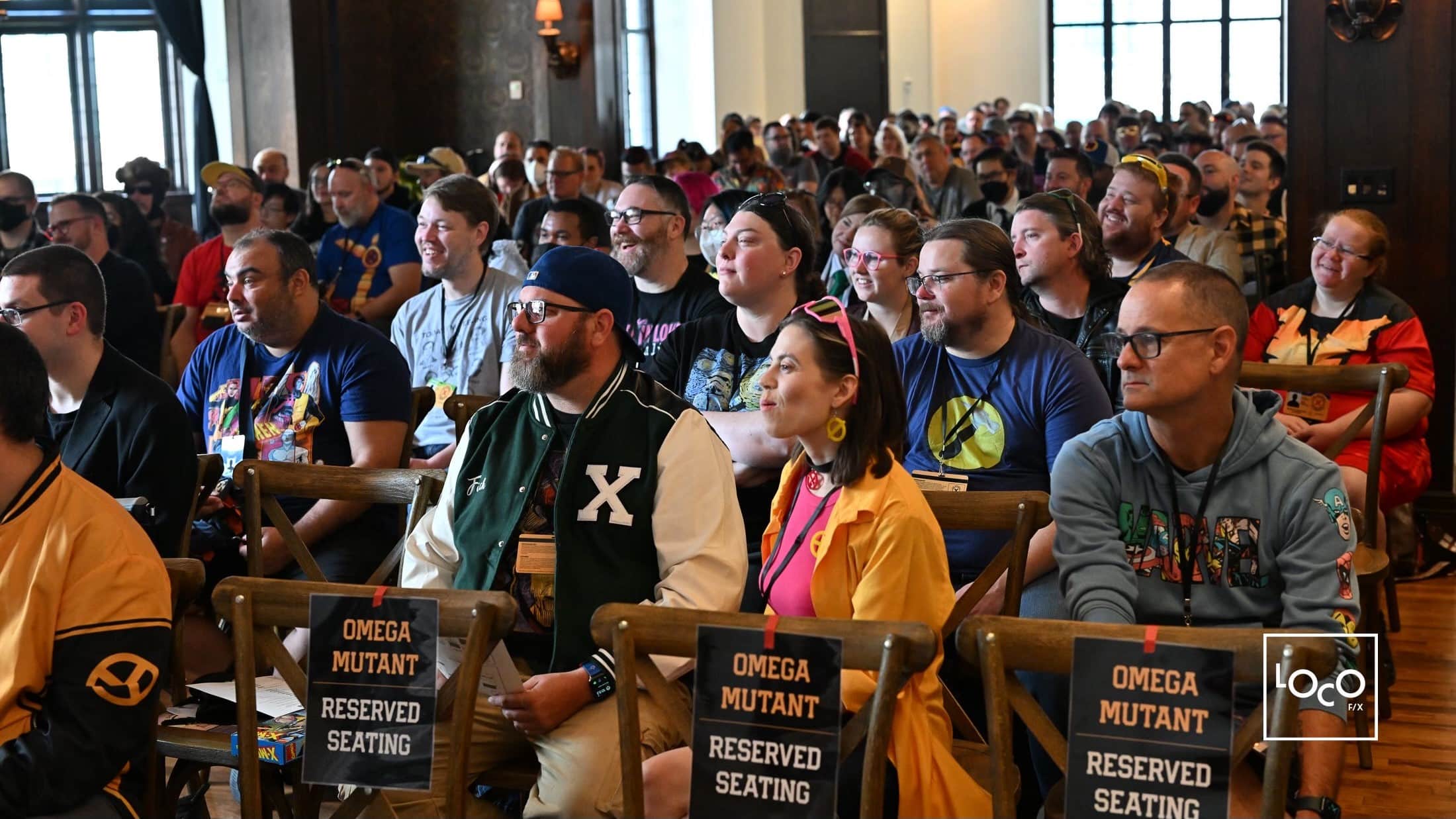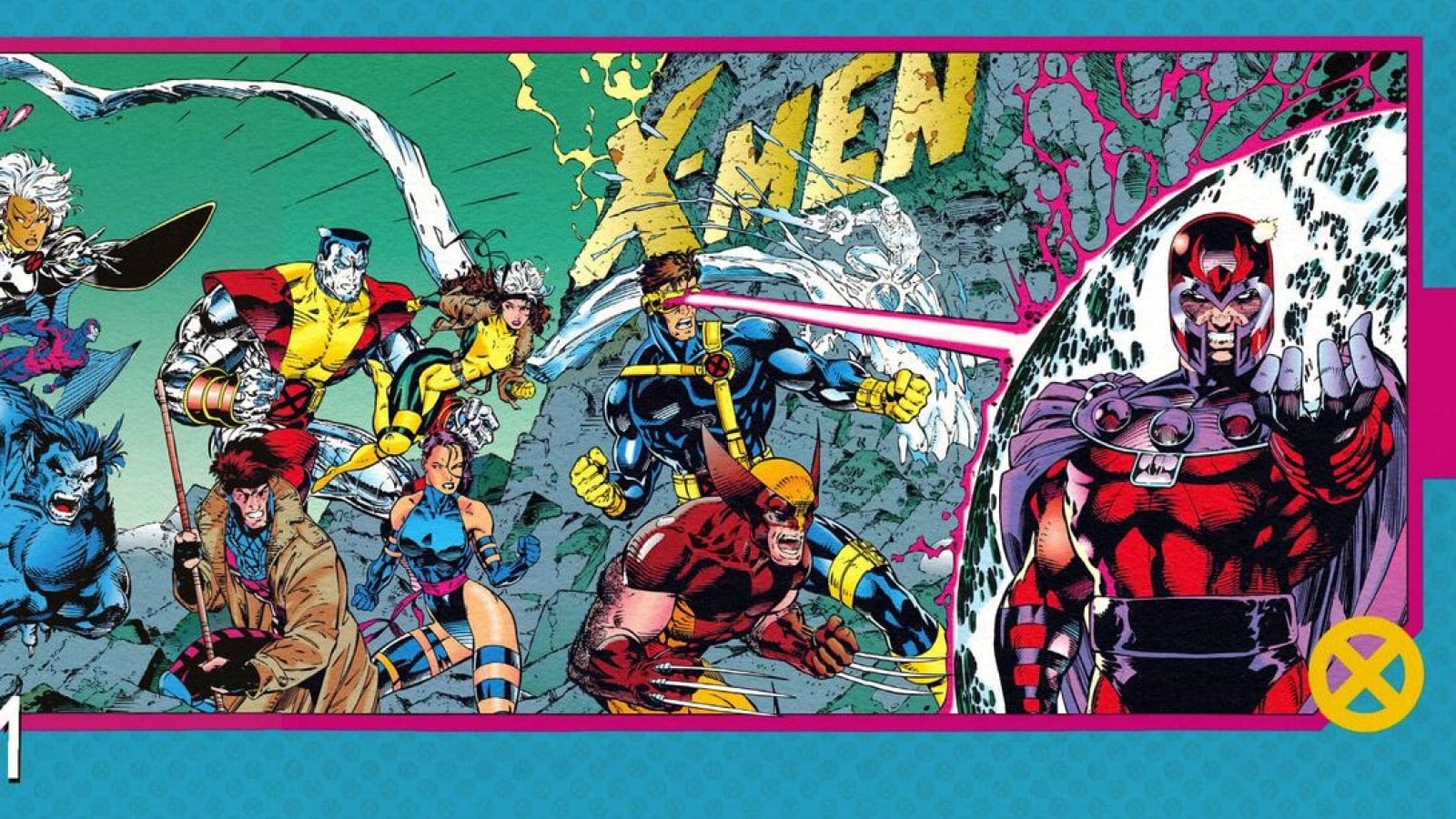In 2022, a crack team of ComicsXF writers and TTRPG lovers came together to try out the Marvel Multiverse RPG playtest — and found it wanting. Now, the members of the ComicsXF staff come together once more to play the finalized version of the game. Has it improved from playtest, gotten immeasurably worse or ended up being much the same? We roll to find out.
Armaan Babu: I am Armaan, your humble Games Master — or, as the game would refer to it, the Narrator — for our discussion of this new RPG. We at ComicsXF playtested this system before, but with a new, completed version out, new Roll20 sheets and a new module featuring a Kang-related adventure to check out, we have some new players, as well!
While I may have run the game, neither of you are strangers to tabletop roleplaying games yourselves, so go ahead and introduce yourselves.
Ian Gregory: I’m Ian Gregory, also known as Doctor Octopus. I’ve had time with a ridiculous number of systems, including a bunch of superhero games, but I was not part of the playtest game. So I’ve got fresh eyes on how this system works for an experienced but new player.
Rasmus Skov Lykke: I’ve not played as much as you two, but I do have several years’ experience as a Dungeons & Dragons player, two sessions as a D&D DM (shoutout to my players, who just survived Death House), several games of DIE as a GM and a few games of DIE as a player.
Plus I’m an avid Critical Role and Dimension 20 watcher.
For this game, I chose to be Captain America, which, when the rest of our party was unable to make it, led to a hilarious team-up of Cap and Doctor Octopus trying to save the day.
Prepping the game, character creation and using Roll20

Armaan: Last time playing the game, I wanted to get into the real nitty gritty of the system and do nearly everything from scratch. This time, I took it easier on myself, and leaned into the tools that Marvel has provided on Roll20.
Having played games across MANY systems on Roll20 over the years, it was to my delight that picking and choosing your favorite characters is a breeze. There’s an impressive library of Marvel characters (still only scratching the surface, of course) with character sheets ready to play — though, of course, seasoned comics readers might take issue with how characters are ranked, or statted up. A Captain America should, for example, have an extremely high Ego stat (the statistic associated with general presence and charisma), but all of that is a matter of opinion.
The digital character sheet does a lot of the math for you, making character creation a fairly simple affair — if you’re not picking a pre-generated character, then making your own is simply a matter of following the digital character creator included in the sheet itself.
One criticism I do have with the Roll20 sheets is this: Leveling up characters is no easy thing. If you create a Rank 1 character, leveling them up to Rank 2 requires you to essentially erase the character you’ve created and restart the process.
More than the character sheets, I found the module I was working with to have extremely well laid out notes, tokens and maps — the prologue campaign that I had access to was created for Rank 1 characters, and I had everything I needed at the ready.
Now, I know neither of you had to do much for character creation, as you both took pre-generated characters, but I wanted to know — how easy a process was it for you to use the digital character sheets for the game?
Ian: On a technical level, it was a piece of cake. I scrolled through the list of pre-generated characters, picked Doctor Octopus, and loaded up the sheet. Like all good virtual tabletop character sheets, it was click-to-roll for my various stats and abilities, all laid out on a single page. The main problem was more an issue with Roll20’s window sizes, because I had so many powers and traits that reading them all meant squinting at small text in scrollable boxes. It was a lot of information to take in at once, and resulted in me neglecting quite a few abilities or traits for part of the game.
This is a minor gripe. That’s a natural consequence of playing any character you didn’t create yourself, because you have to take some time to familiarize yourself with how they work. That said, some of the character-building decisions didn’t really reflect what you might expect a character to be able to do based on their comics appearances.
Rasmus: This was my first time using Roll20, so part of my issues might’ve been due to inexperience.
But like Ian, I had a hard time keeping track of all of the information. Every character can do so much. Putting it in D&D terms, it’s as if every character was a wizard. They have so many abilities, both active and passive, that it was almost impossible to keep track of.
That said, I was thrilled we were using Roll20, because I had looked at a character sheet beforehand and having to keep track of all those things on my own, without the aid of Roll20.
Armaan: I’ll say this, as hard as it may have been for you guys keeping track of your character sheets, keeping track of MULTIPLE character sheets was its own pain. A lot of TTRPGs have simplified character sheets for non-player characters, monsters and other enemies, just to help the GM keep track of multiple characters easily. This game, so far, doesn’t have anything like that — every single character sheet is fully statted up, requiring a GM to know every character they put into the game and their various abilities inside and out before running anything.
Learning the rules

Armaan: I had forgotten until looking back at our playtest review, but a lot of the rules for this game have been simplified. Where there were once over 20 different rankings, there are now just six, and while the differences in ranks mean major differences in battle, it is still possible for a group of very clever and strategic Rank 1 characters to take down a Rank 6 character — though it isn’t advisable!
Relearning the new rules was a rather simple affair — there are a lot of complicated details that one requires to truly master character creation, and effective combat strategizing, but the essence of the rules did not feel too hard to catch up on.
How did you guys feel about that?
Rasmus: Differently!
I tried reading through the playtest rules (as those were the only ones available to me at the time) and ended up giving up, figuring that I’d learn it as we played. Which, to be fair, I mostly did. At last to a degree where I could play it, though, I never felt like I was playing optimally or not constantly worried that I was forgetting something important.
Ian: The six-stat system has been with us from the start, and it’s proven hard to shake because of how intuitive and flexible it can be. I felt like there wasn’t really a situation where I wanted to make a certain kind of roll and the game came up short. In that respect, I think it’s very straightforward to pick up and play.
Despite the easy-to-grasp nature of the core stats (and derived stats like HP and Focus), I felt like it was a completely different game when it came down to powers. Our characters had 10 or so powers, each of which modified the game, often in fairly unintuitive ways. The character sheet informed me that with my enhanced metal arms I could “throw objects farther,” but not how much farther. It told me I could smash someone and score double damage on a “crit” (a 6 on the second of three dice rolled, which is easy to track in Roll20 but sounds like a nightmare on tabletop), meaning I never needed to make a basic attack.
Armaan: I should note here that Marvel assigns one of the three six-sided dice you roll to be a “Marvel” dice. On that dice, the 1 counts as an “M” for Marvel — numerically, it’s a special six, something to keep in mind in case you make a fabled 616 roll.
They really, really bent over backward to make that a thing.
Ian: On top of that, my character had a variety of traits (“Abrasive” and “Genius Scientist”) that came into play on a variety of skill checks. These were cool and made sense, but each one had to be remembered and micromanaged. I feel like this game is almost a trap for new players. It looks really easy to learn and enjoy, but once you start playing you have to keep a lot of information in your head, and interpret a lot of different powers, before you can actually start having fun.
Rasmus: Yeah, I definitely agree with that.
I feel like an RPG, where you can play as Captain America, Gamora, Iron Man, Echo, Miles Morales or so many other Marvel characters is the perfect way to introduce new players into the RPG hobby. But the system is so confusing, with way too many powers and traits, that it will overwhelm newcomers. We were all experienced RPG players, and there were still so many things we forgot we could do.
Which is a shame, because at the same time, it really felt like I could do most things that Captain America could do. It was just impossible to keep track of.
The campaign module

Armaan: So, thoughts about the rulesets aside, I wanted to take a moment to appreciate the introductory module on its own merits. It is a simple investigation into a criminal conspiracy that has ties into something a lot more dangerous — and it is structured in such a way so as to make learning the basics of the game a simple affair.
I ran the module twice — once with Ian and Rasmus, where they both played Rank 4 characters. In other words, they were wildly overpowered for the module here, as much as I tried to balance things out with a few extra enemies thrown in.
I ran it again with another group of players, and we played it straight — everyone was appropriately leveled for the scenario at hand.
Both games ended up being a lot of fun, in their own ways, though the second one naturally lasted a lot longer.
What were your opinions of the one-shot we played?
Ian: I think the one-shot itself was a lot of fun. It came with lots of pre-built environments and tokens, and things flowed very quickly from scene to scene. It felt like a well-designed test space for us to make social rolls, combat rolls and science rolls. We had a couple of fun combat encounters that resulted in cool, feel-good comic book moments, like picking up two guys and smashing their heads together.
But I also didn’t feel like there was a lot of depth to the system outside of combat. “Powers” generally govern your combat abilities (wall-climbing, head-smashing, throwing enemies at other enemies, etc.) and “Traits” governed your non-combat abilities (being good at intimidating people but bad at negotiating, or knowing a lot about science). Because the game feels like it cares a lot more about combat, and because your most interesting abilities are always combat related, the non-combat stuff felt pretty thin: make a few rolls and move on to the next fight.
Even though I was playing Doctor Octopus, a super genius-type character, all of my abilities were about how good I was at beating people up. I wasn’t sure that the game could actually support a story that wasn’t primarily about going to places and punching the people who hang out there. So while I had a lot of fun with the game in the moment, I also felt like I wasn’t interested in returning to it for a campaign or longer series of stories.
Rasmus: I somewhat disagree, though that might’ve had more to do with the company.
When we finished, I definitely wanted to keep playing. It felt like we’d just gotten started and the session even ended on a cliffhanger, which was a smart move by the designers. Like Ian, I also felt that we got to use a good mixture of our abilities, though the game definitely feels light on the actual roleplaying part of things.
Armaan: So two things here: One, both of you guys had some delightful roleplay moments. I did not know that Doctor Octopus and Captain America was a dynamic I wanted more of in my comics, but here we are.
The second thing is, because this game was so imbalanced because of what I did to change things around, you guys were able to more or less smash straight through to the ending, missing out on a lot of potential investigation. Not that that’s a criticism of your play style, but I thought it worth noting because the module offers a lot of advice as to how to proceed with the story’s main investigation, and goes into rather heavy detail about the background of the story, in a way I really enjoyed reading through.
Overall thoughts

Armaan: I think Ian described this game best — it’s in the Uncanny Valley of complicated. It’s not complicated enough to fully realize the fantasy you want to play out within the constraints of the rules, nor is it simple enough for a quick-and-easy game, even with the assistance of the well-designed Roll20 character sheets.
I think what this game works best for is, to put it in comics terms, miniseries, rather than an ongoing. A group of heroes who have a set power level that won’t change during an exploration of a single story. There’s not a lot of potential for a long-term campaign — the options the game provides are both too limited and too inflexible to really feel like you’re getting to do what you want to do with it.
Ian: Something that occurred to us in our post-game discussion is that superhero comics rarely involve characters “leveling up.” There’s a bit of variance at the extreme ends — Spider-Man is certainly better at what he does than when he started as a teenager — but for the most part, from story to story, his skillset doesn’t change. Only in stories explicitly about teen heroes do they actually, measurably improve. In that way, Multiverse’s lack of support for character progression makes sense, but it also disincentivizes players who would want to come back to the game week after week.
Most TTRPGs center themselves on the character creation fantasy. You have made a cool person who lives in a cool world and does cool things. They change in response to your actions. I think Marvel Multiverse is the first RPG I’ve played where that kind of player agency is secondary. This is a game that primarily rewards playing as characters that already exist, that fight villains that already exist. It’s good at that, and it provides an easy intro to role-playing in that you have clear guidelines on how to act. It’s even pretty fun. But I think experienced players are going to play this game for a week or two and realize it simply does something very different from other games.
Rasmus: In many ways, it feels like the game wants to play like an event comic. One big, awesome moment after another, without any of the (supposedly) boring talking stuff in between. Just going from fight to fight, with a little bit of justification in between. Which, to be fair, is what some RPG players want. Just being awesome, while webbing up foes as Spidey. But that’s in conflict with how complex the system is otherwise. It’s like it’s trying to be two different types of games, which means it ends up not being terribly good at either.
Disclaimer: As an Amazon Associate, ComicsXF may earn from qualifying purchases.








